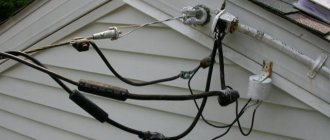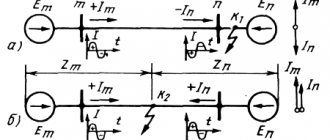- home
- electrical safety
- Anti-static electricity
Static electricity.
What thoughts come to mind when you mention this expression? I remember my childhood and a dark room, where I take off my sweater over my head and feel slight tingling and quite visible discharges between the hair on my head and this item of clothing. Even if my eyes are closed, I still see, it’s a miracle and that’s all.
If you travel back in your memories closer to the years after university, you can remember how you put your food in the microwave and when you touch the door of the device, a slight electric shock occurs, causing fear and bewilderment.
On the way to work, especially in winter, sometimes a wool sweater and a synthetic jacket make a duo with leather. And so you say goodbye to your loved one until the evening, and an electric discharge literally passes between your lips, delivering additional emotions to both, increasing regret about the short separation.
And already at work, being on the composite floor above the batteries, you can rub your sole along the surface of the floor, and then touch your partner, which will also give him a shock in the shoulders (well, the sole also plays a role here). But you shouldn’t do that, otherwise you might cause an accident. In the same room, opening the door of the relay cabinet, you can see a wristband made of rubber material, which is connected to the grounding bus. So as not to destroy sensitive microprocessor devices located in the cabinet.
The above is a reminder that we encounter static electricity everywhere, accumulating and releasing charge - on purpose or accidentally. This is especially important to remember if the profession is related to production or the electric power industry.
The physics of the occurrence and conditions for the flow of static electricity deserve a separate article, in this one we’ll talk about more mundane matters... or grounded =)
What is static electricity
Static voltage is understood as an electrical charge that arises independently and persists in conductors or dielectrics. It appears due to the redistribution of electrons, as a result of which some of them acquire the same charge. The result of these processes is the occurrence of a discharge when touching an object in which static electricity has appeared. This most often occurs in items that are made by joining parts from different materials (for example, two different metal alloys).
Static electricity occurs due to changes in the charge of electrons
What is the danger of the phenomenon
Static electricity in some cases poses a danger to humans. It is expressed as follows:
- Electric shock. The discharge is usually harmless. This is due to its low power. However, if an item accumulates too much charge, it can cause significant harm to human health. It can be expressed in injuries or damage to the skin as a result of a burn. In some cases, the death of the victim is possible.
- Failure of electrical appliances. When a discharge hits consumer electronics, they usually fail. In order to break it, even a very weak discharge is enough, which is not at all dangerous to human health. “Smart” devices are especially sensitive to such effects: computers, smartphones.
- Risk of fire. During the release of the charge, small sparks usually occur. If they come into contact with a flammable substance (fuels and lubricants, high molecular weight solvents), an ignition will occur, which can lead to a fire.
You might be interested in this Determination of voltage drop
This is why measures are taken whose purpose is to protect against static electricity, which prevents its occurrence and minimizes negative consequences. It is especially important in production, where even one spark can lead to catastrophic consequences.
Industrial facilities require special protection
What is the danger of this electrical discharge?
The main reason why we have been so well aware of this phenomenon since childhood is the threat of electric shock in everyday life, but it must be added that this threat is associated with the risk of fire! That is why the transformation of this phenomenon is of great importance.
It is generally accepted that the risk of fire and the need to prevent it do not arise in all industries, but, for example, for the printing industry this issue is relevant due to the use of highly flammable solvents.
As for the factors contributing to the occurrence of fire due to this phenomenon, they are as follows:
- Discharge power
- His type
- His energy
- Presence of an environment favorable to fire.
Let us note that the human body receives not only injuries as a result of the negative impact of the discharge, but also disturbances in the activity of the nervous system!
Sources of static electricity
Sources of static voltage can be divided into two large groups: natural and artificial.
The first represent elements of the landscape, the atmosphere. Electricity in them arises as a result of natural processes. The most famous example is a lightning discharge, which is formed as a result of the movement and mixing of air masses in the atmosphere and the redistribution of electron charges in the air.
The clearest example of a natural discharge is lightning
The second are man-made objects created by man. It can be:
- interior elements;
- textile products;
- pipelines;
- electrical devices;
- heating system pipes.
Important! Some equipment is created specifically to generate static electricity. This includes various generators, separators, and painting equipment. However, in most cases, static voltage occurs spontaneously and can cause significant harm.
Causes
The conditions for the emergence of potential on objects is dry air. At air humidity of 80% this natural phenomenon does not occur.
The moisture in the air prevents charges from accumulating on objects. The causes of static electricity can be:
- When one object comes into contact with another. Potential arises after their separation. Friction, winding/unwinding of artificial materials, friction of car bodies with air, etc.;
- As a result of rapid temperature changes. Thus, static electricity occurs on objects when they are placed in a heated oven;
- Radiation and ultraviolet radiation, X-rays, strong electromagnetic and electric fields;
- Guidance - the appearance of an electric field caused by a charge. The potential arises when processing sheet or roll materials. The phenomenon occurs at the moment of separation of the material and the surface. This effect can occur when one layer is moved relative to another. This process has not yet been fully studied. It can be compared to disconnecting the plates of a capacitor. In this case, mechanical energy turns into electrical energy.
The ability of objects to accumulate charges has a negative effect on technology. If you do not take any measures, it may become damaged and fail.
Protection of pipelines and industrial equipment from static voltage
The discharge can cause the most severe consequences if it affects pipelines at industrial facilities. The consequences of such exposure will be especially severe at a chemical or oil refinery enterprise. This also applies to gas pipelines used in everyday life. To avoid them, measures are taken that are aimed at protecting industrial pipelines from static electricity.
Protection rules
The list of such measures in the Russian Federation is regulated by rules that were approved on January 31, 1971, and are in force to this day.
Pipeline protection is regulated by special rules
Protection methods
The regulatory document provides for the following measures aimed at preventing the occurrence of static electricity charges:
- Grounding. According to the rules, all structures in which a charge of static electricity can form must be grounded.
- A decrease in surface resistivity in a material where a charge can form. This indicator depends on the total area of the object. The smaller it is, the less resistance.
- Use of neutralizers. Static electricity can be neutralized using devices that are designed specifically for this purpose. Most often they generate an induction field or emit radioisotopes. This prevents a large number of electrons from accumulating the same charge and causing static voltage.
You might be interested in this: Features of SMD markings
Equipment grounding
One of the most effective and common methods of protection against static electricity is grounding. As a result of applying this method, all objects in which a charge can form form a single circuit, connected, in turn, to the neutralizing conductor. It usually consists of a steel structure placed in the soil.
Grounding is the most common and effective method of protection
For your information! The benefit of protective grounding is that when a charge is formed, it immediately goes to “zero”, making its way through all the elements of the circuit.
All metal and non-metallic structures that conduct current must be grounded in production. Among them:
- pipelines;
- units and devices;
- thermal insulation;
- ventilation ducts;
- free-standing machines;
- containers for crushing, spraying, splashing processed products.
To install grounding, you will need to perform the following steps.
- Install a ground electrode. It is a device that is in direct contact with the ground (in this case it plays the role of “zero”).
- Connect the pipeline to the ground electrode. A section of a metal structure is connected using a conductor to a previously installed grounding device.
- Connection to the grounding system of other equipment. Other metal objects (ventilation ducts, thermal insulation) are connected directly to the pipeline using conductors. According to current regulations, connections should be made every 40–50 meters.
This is what a ground electrode looks like
. Important! It is necessary to ground not only steel, but also polymer pipelines. The requirements here are somewhat different. The resistance between any point in the pipeline and the ground loop should not exceed 100,000 kOhm (small statistical error is allowed). This may require grounding in several places.
How to remove static from yourself painlessly?
The spark during discharge is not as painful as it is unpleasant. How to remove static electricity from your body or, more precisely, how to discharge yourself without receiving an unpleasant electric shock? To do this, you need to take any small steel product, such as a nail file, a teaspoon or tweezers, as a result of which the positive potential of your body will spread to them. Next, you should touch the edge of the tweezers to the radiator, car or other massive metal object.
Then the spark will jump not between your fingers and the tweezers, but between the tweezers and the object you touch with them. In this case, you will not experience any negative feelings. You just have to do this over and over again at certain intervals, otherwise sooner or later the charge will accumulate in you again, and you will still receive an electric shock.
Methods for relieving static tension
The ESD Guidelines also provide a number of measures to help minimize and eliminate the harmful effects of a discharge. Here are the main ones:
- purification of gases and liquids passing through pipelines from foreign impurities (for example, solid particles);
- prevention of spraying and splashing of substances;
- strict compliance with pipeline speed requirements.
You might be interested in what 1 ampere is equal to in kilowatts
To prevent foreign impurities from entering the pipeline, filters are used. The photo shows a gas
Physics of the phenomenon
It occurs when a charge accumulates on the surface of an object. This occurs when intra-atomic or molecular equilibrium is disturbed.
As a result, the loss or gain of an electron occurs. The electronic balance is disrupted and the ions acquire a positive or negative charge.
Experiments with static electricity are known to every schoolchild when they showed an experiment with an ebonite stick and pieces of paper.
Industrial Safety Measures
To protect enterprise workers from the adverse effects of static electricity, the following safety precautions are observed:
- Ensure constant contact between the worker and the grounding loop. The body of a person working in production must be in constant contact with a grounded circuit. This ensures that the discharge passes quickly through the tissue without causing any harm.
- In this regard, it is good to humidify the air, then sudden lightning of static electricity does not occur as often as when the content of evaporated liquid in the atmosphere is low. As its quantity increases, the risk of their occurrence decreases significantly.
- Ionization is carried out. If you saturate the air with positively and negatively charged particles, the possibility of “skew” in one direction, causing the appearance of a charge, is reduced.
The air in workshops is saturated with charged particles using industrial ionizers.
Static voltage is a spontaneously generated electrical charge. Its appearance is especially dangerous in production (in pipelines, ventilation systems), as it can cause fire and detonation. The concept of static electricity and a list of methods of protection against it are given in special rules. Such means as grounding, reducing surface resistivity, and increasing humidity are used.
Factors
Statics entails dangerous and harmful factors. They are especially clearly visible in enterprises where certain safety precautions must be observed when working with flammable materials. A spark can cause a fire or explosion, and when a person works with machines, it can cause injury due to muscle contraction after the discharge.
Factory fire due to spark
Negative factors also apply to devices. Equipment for precise measurements ceases to show correct data, and microcircuits in simple devices burn out after receiving a discharge. Therefore, you need to know how to remove static stress from materials and people.









